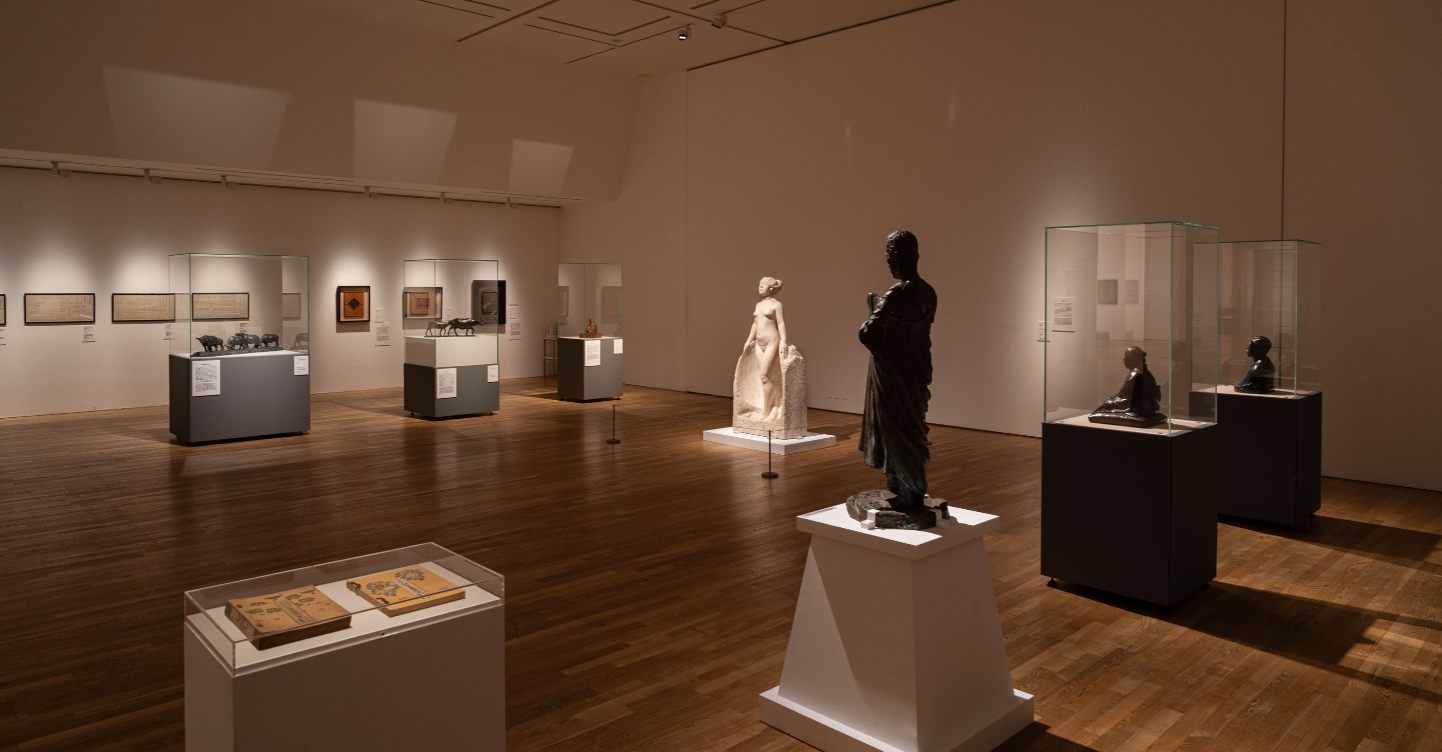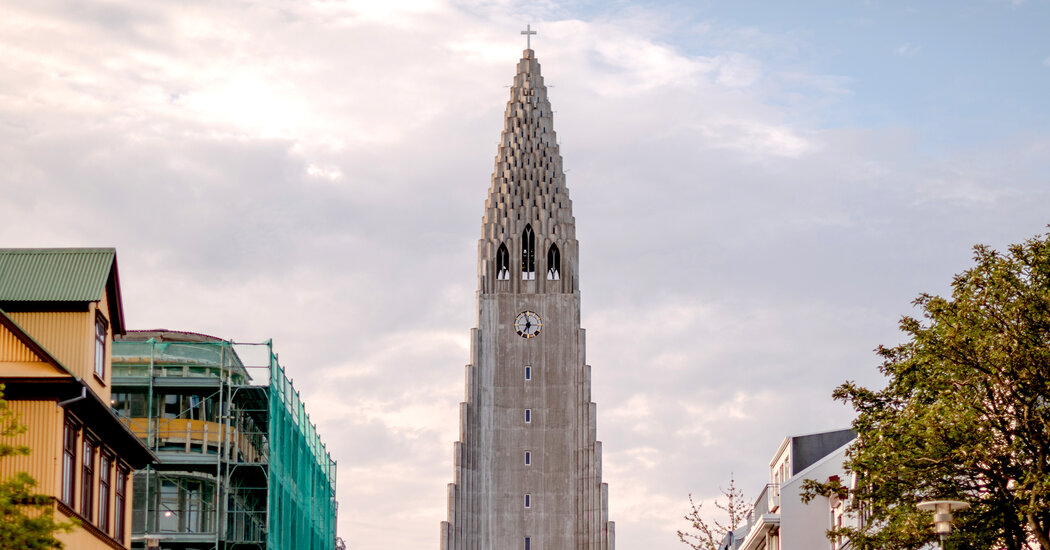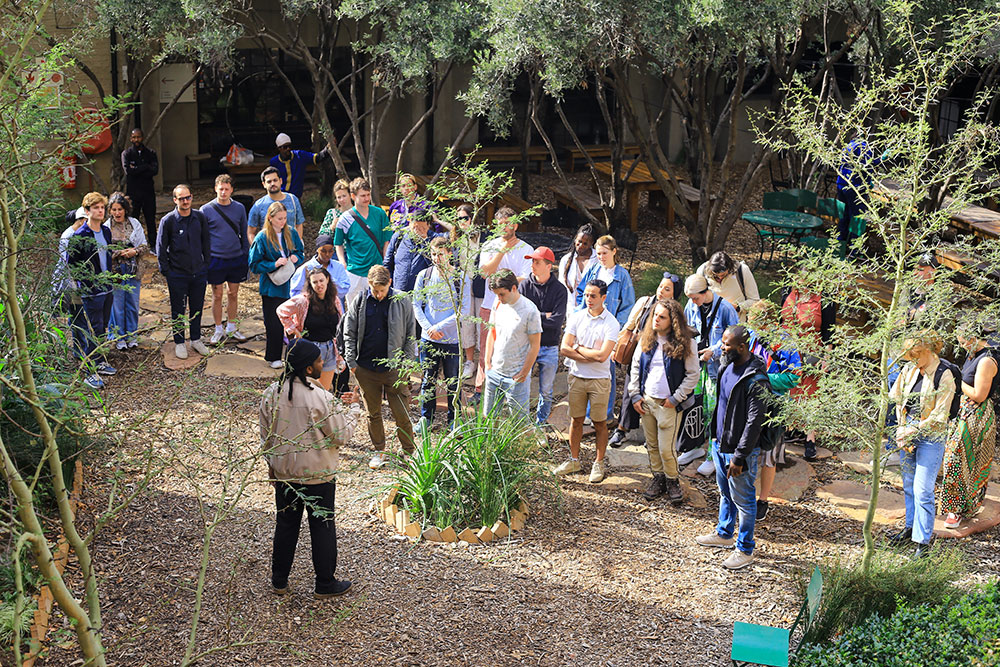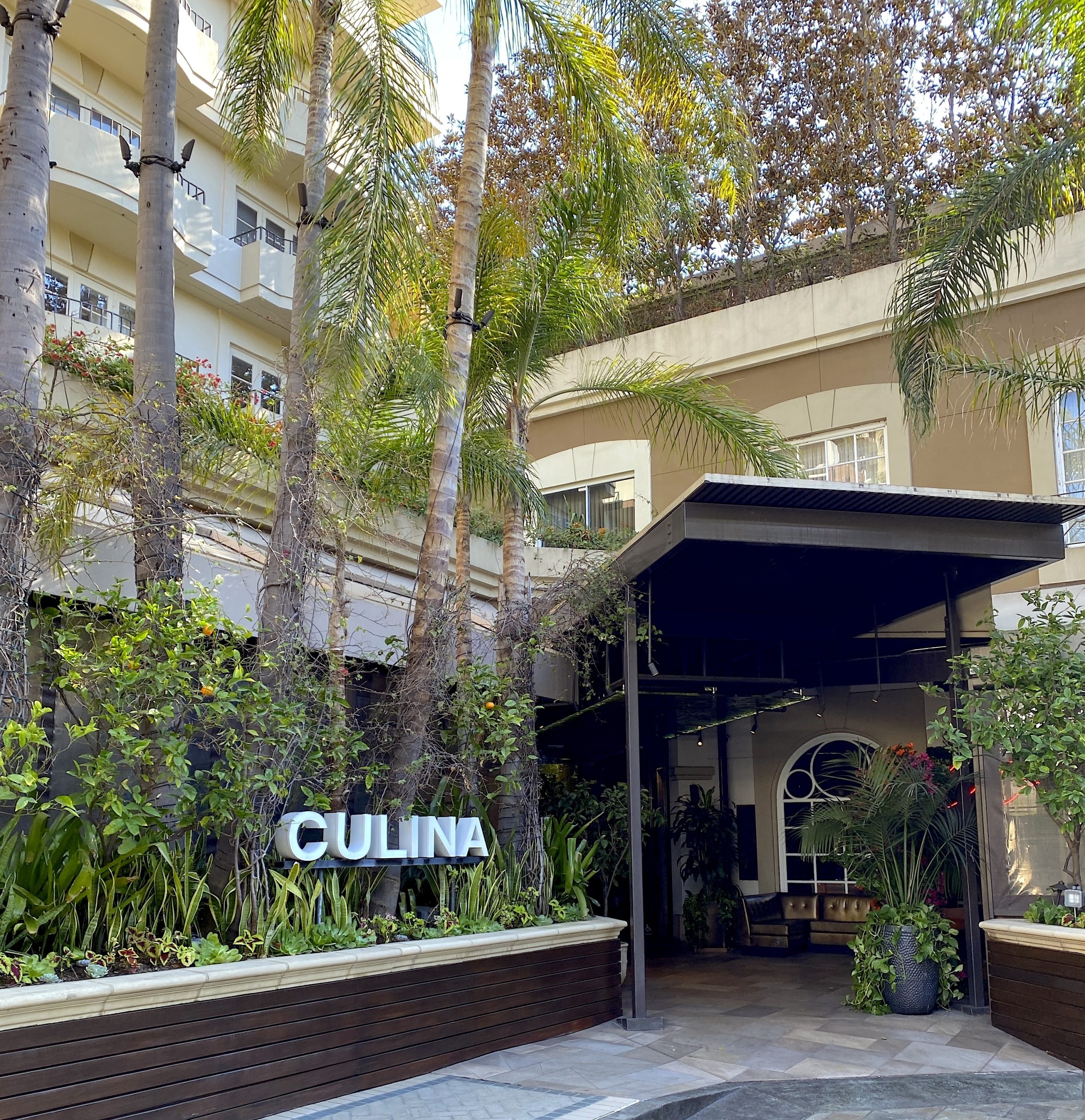
Jointly curated by the National Taiwan Museum of Fine Arts (NTMoFA) and Tokyo University of the Arts (TUA), “Huang Tu-Shui and His Time: Taiwan’s First Western-style Sculptor and the Tokyo Fine Arts School in the Early 20th Century” is now open at the University Art Museum, TUA, Japan. Minister of Culture Li Yuan, Director of NTMoFA Chen Kuang-yi, President of TUA Katsuhiko Hibino, Director of University Art Museum, TUA Hiroko Kurokawa, and other distinguished guests attended the opening ceremony. The exhibition features 58 works of art by Taiwanese and Japanese artists, including “Water of Immortality”, the Huang Tu-Shui classic work designated as a national treasure in 2023. The exhibition opens from 6th September to 20th October.
Exhibition view of the “Huang Tu-Shui and His Time” featuring oil portraits by Taiwanese students who studied at Tokyo University of the Arts between 1920 and before World War II. Courtesy of the National Museum of Fine Arts.
The Rising of Huang Tu-Shui in the Taisho period (1912-1926): an artistic era of fusion of Japan and the West
Huang Tu-Shui (1895-1930), born in Taipei, was the first Taiwanese international student to enroll in the Tokyo Fine Arts School. He was also Taiwan’s first modern Western-style sculptor to be selected for Japan’s Imperial Art Exhibition (Teiten). He was once the only Taiwanese artist who received recognition and support from a wide range of collectors, even from the imperial family. There is no doubt that Huang Tu-Shui’s deep connection with Japanese art makes this collaboration between NTMoFA and TUA particularly symbolic.
Huang Tu-Shui studied at the Tokyo Fine Arts School from 1915 to 1922, studying under Koun Takamura, and then established his own studio in Tokyo in 1923 where he worked until his sudden death at the age of 36. During the decade that Huang Tu-Shui devoted himself to the integration of Eastern spirit and Western techniques, his creations were significantly fostered by the continuous cultural fusion in Japanese society as it faced generational changes. Whilst the impact and integration, innovation, and inheritance of new and old values from the late Meiji and early Taisho period continued to thrive, it was an artistic era when all kinds of schools also bloomed.


The “Huang Tu-Shui Section” curated by the National Museum of Fine Arts features 10 of Huang’s works, including “Water of Immortality”, “Sakyamuni Buddha” and “Sculptural Portrait of Agricultural Minister Yamamoto (Yamamoto Teijiro)” from NTMoFA’s collection, along with 7 pieces from private collection. Courtesy of the National Museum of Fine Arts.
This exhibition selects sculptures and paintings from the TUA collection in the early 20th century, including sculptures from Huang Tu-Shui’s mentor Koun Takamura, and his son Kotaro Takamura. Other sculptures include works by Denchu Hirakushi, whose artistic method was similar to Huang Tu-Shui’s, Seibo Kitamura, and also Morie Ogihara who emphasized the expression of emotion over form. Other than sculptures, other artworks are represented by Western-style painter Takeji Fujishima who greatly influenced Taiwanese students abroad and there will also be works by Taiwanese alumni who also studied at Tokyo Fine Arts School, including, Li Mei-Shu, Chen Chih-Chi, Chen Cheng-Po, and Li Shih-Chiao, Kuo Po-Chuan, Yen Shui-Long and other artists. It is hoped to expose the audience to Tokyo during a time of generational change and to enable appreciation of Huang Tu-Shui’s artistic achievements as well as the complementary nature between Huang Tu-Shui’s works and those of his contemporaries.
The Immortal Huang Tu-Shui: Pioneer of Taiwan’s Modern Art
Curated by NTMoFA, the Huang Tu-Shui section will display ten of Huang Tu-Shui’s works and related archives, including “Water of Immortality”, “Sakyamuni Buddha”, and “Sculptural Portrait of Agricultural Minister Yamamoto (Yamamoto Teijiro)” from the NTMoFA collection, as well as “Swan”, “On the Way Home”, “Deer” and others generously lent by private collectors for the exhibition. Among them, “Water of Immortality” was selected for the third Imperial Art Exhibition (Teiten) in 1921 and the Taiwan Pavilion for the Peace Commemorative Exposition in 1922. Its historical significance is self-evident. This work not only demonstrates Huang Tu-Shui’s mastery of Western carving techniques but also uses the figure of an Asian woman and the holy temperament of Guanyin Bodhisattva to fully express Eastern aesthetics and Taiwanese local spirit. On viewing, it is a work that elicits a sense of its aesthetic value to all.


The “Huang Tu-Shui Section” curated by the National Museum of Fine Arts features 10 of Huang’s works, accompanied by related historical documents. Courtesy of the National Taiwan Museum of Fine Arts.
Huang Tu-Shui’s stay in Japan coincided with the era of great changes in modernization after Japan’s Meiji Restoration. In a time of great historical change, through undertaking the study of both Western and Japanese art, the artist strived to create art with Taiwanese characteristics. He shows excellent carving skills, switching freely between wood carvings, bronze carvings, and marble carvings, and skillfully playing with themes such as animals, portraits, and Buddhist statues. In his short and splendid creative career, in addition to reflecting his pursuit of improving sculpture techniques, the Taiwanese cultural consciousness contained in his works has also exerted an influence on future generations of artists. Huang Tu-Shui is unquestionably a pioneer in promoting the development of Taiwan’s modern art.
Along with the opening of “Huang Tu-Shui and His Time: Taiwan’s First Western-style Sculptor and the Tokyo Fine Arts School in the Early 20th Century”, TUA will also host a seminar at 13:00 on 6 September at the University Art Museum. Speakers include NTMoFA researcher Hsueh Yen-Ling, and TUA professors Takashi Murakami and Yasushi Okada. They will share the context and research results of this exhibition with the audience. For more information, please visit NTMoFA Facebook Page.
Do you have a story for the WhenInManila.com Team? Email us at story.wheninmanila@gmail.
Publisher: Source link
Latest Posts
-
31 July 2025
-
26 July 2025
-
14 July 2025
-
01 July 2025
-
07 August 2025
-
29 July 2025
-
20 February 2025
-
04 February 2025
Newsletter
Sign up for free and be the first to get notified about new posts.
Get The Best Blog Stories into Your icountox!
Sign up for free and be the first to get notified about new posts.










